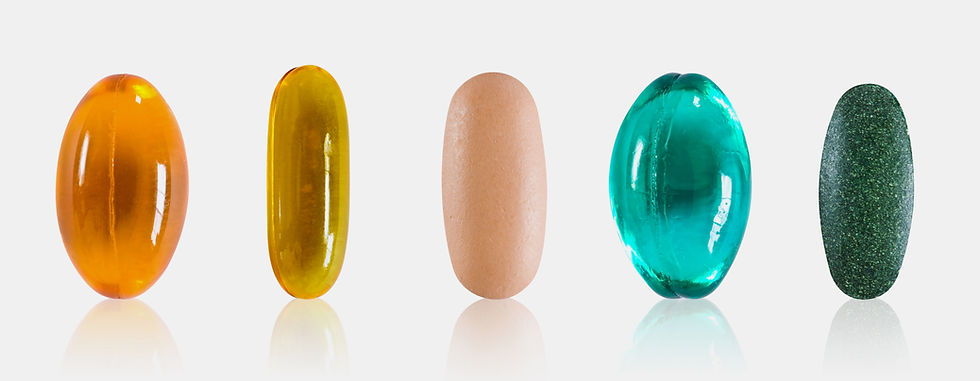Foods that Fuel Fetus and Mom Health
- Alex Brandy

- Sep 17, 2023
- 6 min read
“Making the decision to have a child is momentous. It is to decide forever to have your heart go walking around outside your body.” — Elizabeth Stone, professor and author

A macros diet involves counting the intake of 3 macronutrients: proteins, fats, and carbohydrates. The primary focus of a macro diet is to count macronutrients, but it also involves staying within a specific calorie range. If you feel your diet is heavier in one macronutrient group than the others or vice versa, lighter, then counting macros is important for a healthy, well-rounded diet for you and your baby.
Did you know that the ideal weight gain during pregnancy depends on the woman’s pre-pregnancy weight? According to a webmd.com article, “if you were in the healthy weight range before becoming pregnant then ideally you should gain between 25-35lbs. after becoming pregnant. Underweight women should gain 28-40lbs., and overweight women may need to gain only 15-25lbs. during pregnancy.”
Click this link to calculate your Macros for pregnant and breastfeeding women. This will help maintain an appropriate weight gain for both you and your baby.
Let’s dissect some points about macros, foods, and vitamins during pregnancy:

CARBOHYDRATES
According to www.familyeducation.com“getting the right balance of proteins, carbohydrates, and fats during pregnancy is simple, since the ratios are the same in pregnancy as at other times**”:
**”45-65% of your calories should come from carbohydrates; 20-35% should come from fats; and 10-35% should come from protein. The components of these nutrients do not need to be exact nor every day but should aim to achieve a balance over the course of a week. A proper mix of nutrients comes from fruits, vegetables, nuts, and whole grains.” Carbohydrates are made up of sugars and starches and can play havoc on a growing body. Although these sugars and starches provide energy, sustained energy is different from spike and steady energy.
There are 2 subgroups of carbohydrates: refined and unrefined. Refined foods include white flour, white rice, white sugar, or anything that alters the chemical design of the original grain. Refined foods break down rapidly and enter the bloodstream in the form of a spike in glucose. That spike may have health risks for mother and baby, producing larger babies with a subsequent risk of obesity later in life.
Unrefined carbohydrates are processed less, staying more closely in the form of the original grain. This creates slower breakdown of glucose in the bloodstream. It is a steady release instead of a spike release. Unrefined carbs are a good source of fiber, and we all know now that fiber helps keep our bodies internal movement with less constipation. Foods such as whole wheat bread (not so much whole grain bread), whole wheat pasta, brown rice, whole wheat types of cereal, etc.
Carbohydrates break down into glucose, which passes easily across the placenta and is a good source of fuel for both you and your baby. Aim for 6 servings a day which is equivalent to a slice of bread or 2 oz. of cereal or 5 crackers.

PROTEINS
Protein is essential for the growth of the baby and the placenta, as well as for the mother’s health. As a rule, aim for 2-3 servings of protein-rich foods per day. A typical serving being 3oz. red meat, or 5oz. fish. Most adults average 3-1/2 oz. of protein per day so there generally is no need to increase your intake, especially if you have protein at every meal. If you are a vegetarian, include with protein at each meal a protein containing snack. Check with your doctor regarding all of these recommendations if you are having multiple babies.
Protein sources should be low in saturated fats. Example, skinless chicken, lean beef or pork, tofu, low fat cheese and yogurt, natural peanut butter (2T), and skim milk. Healthy proteins that are unsaturated fats include nuts, fish**, and seeds.
**Some fish should be limited since they contain mercury which could be harmful to your baby.

FATS
When it comes to fats, fats contain vitamins and contribute to the development of healthy cells. Fats help a person’s body store energy and protect the nerves, regulate hormones, aid in nutrient absorption, and maintain the body’s temperature. Although fats make a useful contribution to overall nutrition, their intake needs to be limited. As mentioned above, unsaturated fats are preferable. High fat foods include butter, avocado, nuts, meat, and fatty fish. Be careful when choosing high fat foods.
When it comes to Omega-3 fatty acids, studies suggest that the development of the baby’s nervous system may be boosted by the magical Omega-3 fatty acids. It is the richest source of which is found in fatty fish. Do your absolute best to avoid fish high in mercury and instead choose fish such as wild salmon (farm raised is a good second option if there are no other options), or anchovies, sardines, cod, Lake trout, and canned light tuna. Other sources of Omega-3 include ground flax seed and flax seed oil, walnuts, canola oil in limited quantities, and Omega-3 eggs.
Dairy supplies proteins and fat as well as calcium and vitamins. Calcium is essential for bones and teeth; opt for low fat dairy in all forms. A good amount would be 2-3 servings per day such as 1oz. hard cheese or 1 cup of milk. Now let’s take a look at all the vitamins and minerals that help a growing baby thrive….

“Babies are such a nice way to start people.” — Don Herold, writer
What do vitamins do and is my pregnancy multi vitamin covering all I and the baby need?
According to webmd.com, “your prenatal vitamins should contain the following percentage of each group”:
400 mcg (micrograms) of folic acid ( a B vitamin), 400 IU (international units) Vitamin D, 200-300 mg (milligrams) of calcium, 70 mg of vitamin C, 3 mg thiamine (a B1 vitamin) which can be found in meat, seafood, pastas, grain products, 2 mg of riboflavin (a B vitamin) found in foods such as salmon, liver, mushrooms, almonds, eggs, 20 mg of niacin (a B vitamin) can be found in foods such as brown rice, nuts, legumes, and seeds, coffee and tea, and 6mcg of vitamin B12.
From A-Zinc here is check list:
Vitamin A is important for healthy eyes, skin, and hair. Orange fruit and vegetables such as apricots, carrots, peppers, and tomatoes.
Vitamin B helps body systems in fighting infection. Good sources of Vitamin B include bananas, milk, whole grains, cheese, and cabbage.
Vitamin C aids in the absorption of iron and also helps fight infection. Foods such as kiwis, peppers, broccoli, and spinach.
Vitamin D helps the absorption of calcium. Foods such as eggs, dark leafy greens and 10 minutes of skin exposed to sunlight. If you don’t have enough exposure to sunlight most days, a supplement may be prescribed by your doctor.
Vitamin E contains antioxidants to help keep skin, hair, and muscles healthy. Nuts and seeds are a good source of this essential vitamin.
Folate and folic acid have been studied and shown to reduce the risk of neural tube defects such as spina bifida, by at least 50%. Folate helps the neural tube close and pregnant women are advised to eat a folate-rich diet that include green leafy vegetables, asparagus, and peanuts. Diet alone is not enough so ask your doctor about a folic acid supplement of 400 micrograms before conception and during the first trimester.
Iron is needed for hemoglobin production in red blood cells. Sources of iron include meat, fish, chicken, eggs, dried apricots, spinach, and broccoli.
Calcium is essential for healthy bones and teeth. Sources include dairy, eggs, fortified cereals, and leafy green vegetables.
Zinc There is so much rapid cell growth during pregnancy, zinc helps maintain a healthy immune system. Zinc also helps maintain your sense of taste and smell and helps heal wounds. Excellent sources of zinc include red meat, shellfish, dairy and whole grains.
Always work with your doctor for the best nutritional breakdown of food groups, especially if you are allergic to certain foods.
Just as important to learn the best foods to eat it is also important to learn what not to eat. For safety's sake and to make sure you are not preparing your foods incorrectly, please visit this webmd.com site to learn what foods to avoid during pregnancy.
And finally, let’s take a glance at food cravings.
You would think that pregnancy food cravings are from a missing vitamin or mineral in the mother’s diet, especially if the first trimester or at any time throughout the pregnancy there is nausea or vomiting.
Several medical sources say that doctors don’t know exactly why pregnant women get the urge for specific tastes, textures, or flavor combinations, but several theories do exist: According to healthline.com, flo. Health, and verywellfamily.com,
“Hormonal changes that take place during pregnancy could have an impact on our sense of smell and taste, which could be linked with food preferences and cravings.
Increased nutrient requirement or nutritional deficiencies could lead to craving of certain foods.
"Pregnancy is a time of profound hormonal changes, especially during the first trimester. This could cause sensory changes, such as becoming more sensitive to smells.
Cravings might also happen because of the extra work your body does to quickly produce a lot more blood."
"It might be as simple as the comfort certain foods bring as your body changes.”

“Pregnancy can be a time when you take tremendous pleasure in eating, not only because you may enjoy food more but also because you know that it is nourishing both you and your baby.” — Martha Rose and Jane L. Davis
Call to Action
What kinds of cravings have you experienced during your pregnancy, if any?
How hard was/is it to stay within the recommended weight gain?
What are your plans to stay food healthy and get back in shape once the doctor gives the green light to resume your life?






Comments